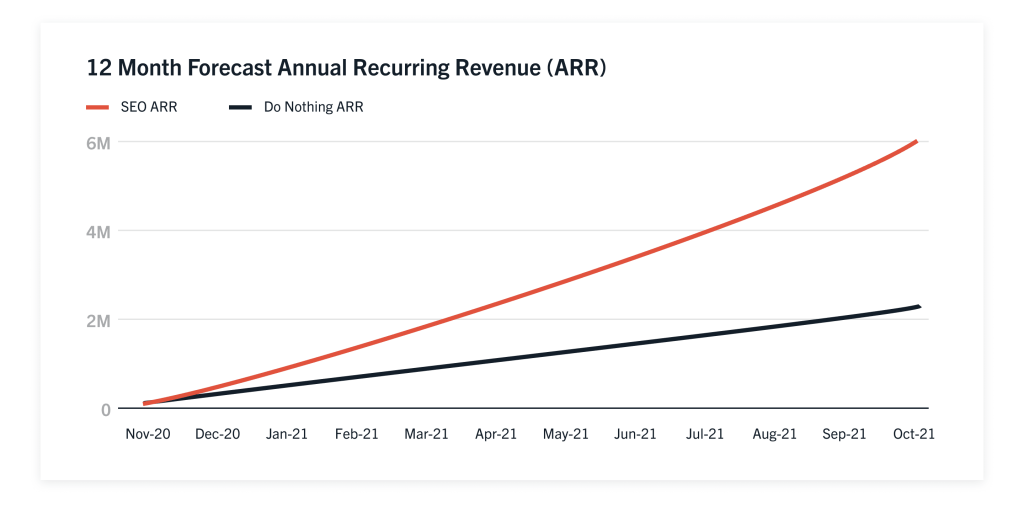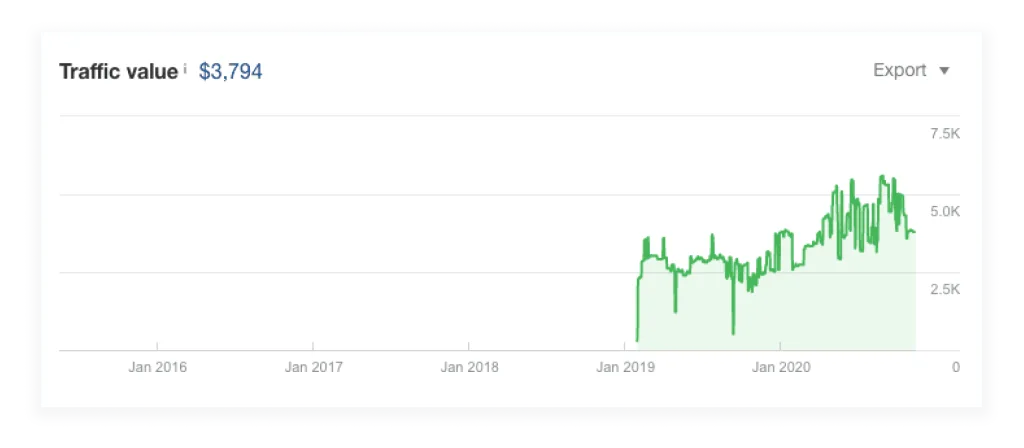A marketer’s mind is always teeming with new ideas.
And whenever that light bulb goes off, you know it’s going to take some good old fashioned convincing before you can get the green light from your boss.
If you’ve been in this position before, you know that this is sometimes easier said than done.
Making the business case for certain initiatives can be difficult, particularly if there’s a knowledge gap on the way up the ladder.
This is a common obstacle for many in-house marketers and SEOs, who struggle to communicate the value of organic search to higher-ups at the organization. The reason for this is because SEO typically requires cross-functional resources, some technical knowledge, and proving a return-on-investment (ROI) can be challenging.
If you’re considering pitching SEO as a new initiative (or having trouble communicating the results of your existing efforts), you’ll want to stick around for this one.
Or if you’re more of a visual learner, check out this video for a full rundown:
Making the business case for SEO
To talk SEO to your CMO (or CEO, CRO, CXO, etc.), you’ve got to learn to speak their language. Above all, executives care about growing the business.
And unless your boss has a background in digital marketing, there’s a good chance they view SEO at a high level, primarily as it relates to traffic growth.
While this is technically correct, more traffic doesn’t always equate to more paying customers. To accurately communicate the value of your SEO efforts, you need to get more granular in your reporting and start thinking about the metrics that directly tie back to revenue.
Here are three main points to focus on:
Impact
Ask yourself the following question: what’s the ROI of doing SEO versus not doing it at all?
In other words, if you drop SEO altogether (or never start), how much potential revenue are you losing out on?
Instead of reporting on how much potential traffic you’re able to generate, report on how much revenue you’re potentially missing out on.
Looking at SEO from this angle challenges you to really hone in on impact from an executive’s point of view. The tricky part is taking this and turning it into an ROI forecast that uses data to tell the same story.
Marketing is commonly billed as a creative field. While this is certainly true, financial modeling and analytics is actually a major part of the job. The higher up you go, the more critical it is to know how to build an effective report and be able to forecast marketing results.
Keep in mind that whoever you report to is also responsible for funneling that information upward. This means that your SEO forecast should come complete with all the bells and whistles: accurate numbers, compelling data visualizations, and airtight predictions.
When you have this piece of it down, you can then customize the report to include all of the key SEO metrics that the executive team cares about, such as LTV:CAC and organic revenue.

Incremental value
In addition to comparing the value of SEO against doing nothing, your boss is also going to want to know how SEO stacks up against other marketing channels.
For example, let’s say your top-performing channel is paid social. LinkedIn ads have been working exceptionally well for your business and the CMO is hesitant to allocate resources to an unproven initiative. It’s your job to show how these additional resources would pay off if they were allocated towards organic search instead.
To do this, consider the incremental value of SEO.
Incremental value refers to any additional revenue that’s generated as a direct or indirect result of a specific marketing activity. It’s typically used to measure the value of different paid media channels, since you can clearly measure performance against dollars spent.
Although SEO isn’t nearly as black-and-white, you can still use the idea of incrementality to frame your way of thought when pitching your CMO for more resources.
Ask yourself the following questions: What happens if you’re given extra headcount to put towards SEO? What results will you be able to achieve with more budget?
Every additional resource that you ask for should have a measurable output that your CMO can visualize and relate back to revenue goals. Reporting on SEO through the lens of incrementality makes it crystal clear to executives why SEO is equally (if not more) deserving of budget over other marketing channels.
The other catch is that it takes some time for SEO to start working.
When you’re setting timeline expectations with your boss, it’s critical to be transparent about how long it will take to see SEO results. There’s no hard-and-fast way to predict this, since it depends on a variety of factors, such as how competitive your industry is and how much work your website needs.
One thing’s for sure: it’s not going to happen overnight.
Instead of trying to predict how long it will take for your SEO strategy to work, be transparent with your executive team and highlight the potential for long-term value that makes it worth the investment.
Long-term value
Last but not least is long-term value, which is one of SEO’s biggest selling points.
Let’s run through a quick lesson in economics.
Everytime you create a piece of content, or build a backlink, or have some sort of SEO output, there’s an initial sunk cost associated with it. This is the initial marketing expense that you aren’t able to recover.
But every new lead or customer acquired as a result of that SEO output has increasing marginal returns against the initial investment.
We commonly refer to SEO as a “moat” for this exact reason. If you put in the time and resources to build a strong foundation in organic search, your web content has the ability to generate increasing marginal returns indefinitely. It’s not something you have to keep throwing money at to see results.
That’s not to say that SEO is something you can “set and forget.” It still requires ongoing effort and upkeep, but significantly less so than other marketing channels. One well-ranking blog post can bring in qualified traffic, conversions, and revenue for months to come.
For example, a post on the Directive blog has been generating traffic to our site for nearly two years. Take a look:

Conclusion
Getting buy-in from executives is essential to launching (or maintaining) any kind of marketing strategy, not just SEO. If you expect your boss to get behind an idea, position it in a way that speaks to what they care about.
Remember that just because you understand the marketing benefits of having an SEO strategy, this might not necessarily resonate with your CMO. To speak the language of the C-suite, remember to always tie your ideas back to revenue and business growth.
Other agencies might help you get discovered in search.
Other agencies might help you get discovered in search.